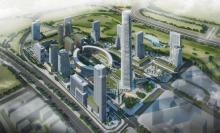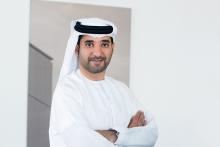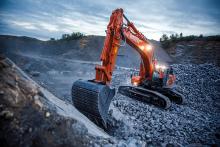
Solomon Baumgartner likes to highlight Lafarge Egypt’s supply of high-quality building materials to major national infrastructure works since the 19th century. In 1864, the company’s premium quality hydraulic limestone helped build the Suez Canal, part of the Silk Road connecting Europe with Asia.
“Here we are, after 157 years, continuing to play a vital role in the construction of Egypt’s different sectors,” he says, proudly. “Our products are being used on building projects in the country’s main tourist locations like Marrassi, Pyramisa Beach Resort Sahl Hasheesh, Cairo Festival City Mall and El Gouna. We are also supplying materials for the Egyptian Grand Museum which will open soon.”

In the transport sector, Baumgartner says Lafarge Egypt’s extensive highways construction materials supply expertise enabled the company to help complete the 170km-long Cairo–Alexandria Desert Road in 2012, optimising construction costs and maximising road service life. Lafarge Egypt also supplied building materials for the popular 45km-long Shoubra–Banha Highway.
“Lafarge Egypt is today contributing to one of the most technically challenging projects in Africa: the Cairo Metro project, supplying over 900,000m³ of various concrete types and delivering optimum solutions that best suit this megaproject’s construction needs,” says Baumgartner.
Lafarge Egypt also supplied materials for the construction of airports across Egypt, including Cairo International Airport Terminal 2; and Borg el Arab and Sharm El Sheikh international airports. The company has also supplied building materials to the Cairo-Alexandria desert road project, metro stations, and the Suez Tunnel.
Baumgartner adds: “We participated in building power stations, such as New Cairo power station, and the Ain Sokhna and Kuraimat power plants. Our products were also widely used in the construction of the American University in Cairo and El Galala University. We also supplied materials for Hospital 57357, which is dedicated for children afflicted with cancer.”
New Administrative Capital Project
Egypt’s New Administrative Capital is a new city megaproject under construction since 2015. Located 45 kilometres east of Cairo, a megacity with a population of nearly 20 million, and just outside the Second Greater Cairo Ring Road, the NAC will become the new administrative and financial capital of Egypt, housing the main government departments and ministries and foreign embassies. Covering a 700km² area, the NAC will have a population of 6.5 million people. It is hoped that it will significantly reduce Cairo’s notorious congestion and pollution.

Baumgartner says Lafarge Egypt has been involved in the project from day one, cooperating with all stakeholders using the company’s building products. “We were involved in the new NAC’s power plant, built over 175 acres and producing 4800MW of electrical energy. Our products are also used in the roads, bridges, tunnels, and the Green River recreational project of the new capital.” Lafarge Egypt has, he says, also played a key role in many of Cairo’s most prominent recent infrastructure projects, including the 1,266ft, 80 floor-Iconic Tower, the tallest skyscraper in Africa.
Lafarge Egypt’s operations
One of 70 company members within the Holcim Group, the Switzerland-headquartered global building materials giant, Lafarge Egypt established one of the MENA (Middle East, North Africa) region’s largest cement plants at Ain Sokhna in 1997. It acquired Egyptian Cement Company from Orascom in 2008.
Baumgartner says the Ain Sokhna plant has five production lines with an overall capacity of 9.5 tons. Besides cement production, Lafarge Egypt also has a near 2 million m³ ready-mixed concrete business.
Lafarge Egypt launched Geocycle Egypt in 2011 which feeds the Lafarge Cement plant in Ain Sokhna with refuse-derived fuel (RDF), an alternative to fossil fuel.
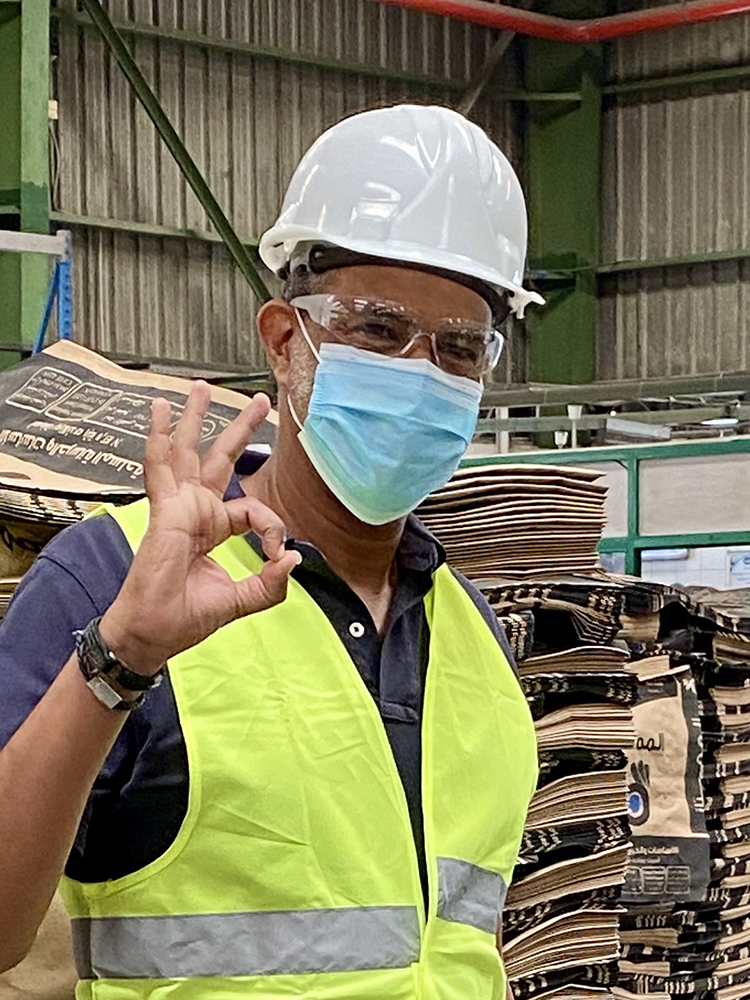
“Strictly complying with the ecological standards in Egypt, Geocycle has meticulously chosen RDF waste management solutions for their economical- and environmental-friendly nature supporting green building,” Baumgartner notes.
Lafarge Egypt’s CEO says the company employs “1,500 well-trained and highly qualified” employees. The firm’s portfolio includes a cement bags plant which serves the entire Egyptian cement industry along with other sectors in the country, producing roughly 330 million bags a year.
Baumgartner says that the company is committed to helping build a greener and smarter future that works for all. “We provide sustainable building materials to meet the needs of our customers, whether they are individual homebuilders, large construction companies, architects or local artisans.
“We are a big contributor to national projects with our EcoPlanet Prime cement, which reduces carbon emissions by 60%, having been used to build Suez Canal tunnels, Cairo’s Iconic Tower, and the Cairo Metro. We also supported the Egyptian government by supplying huge quantities of cement in a very short time for the country’s new electrical power plants.”
COVID-19 impact
Baumgartner says the COVID-19 pandemic has severely impacted the Egyptian building materials sector and the wider global cement industry. “Construction of individual housing units, which are linked to a major chunk of cement purchases, has been harshly affected by the pandemic. Companies don’t tend to invest in construction in times of crisis. Additionally, a ministerial decision to halt licences for building, expanding, upgrading, amending, or supporting construction work for private housing in Egypt’s major cities has increased pressure on the cement sector.”
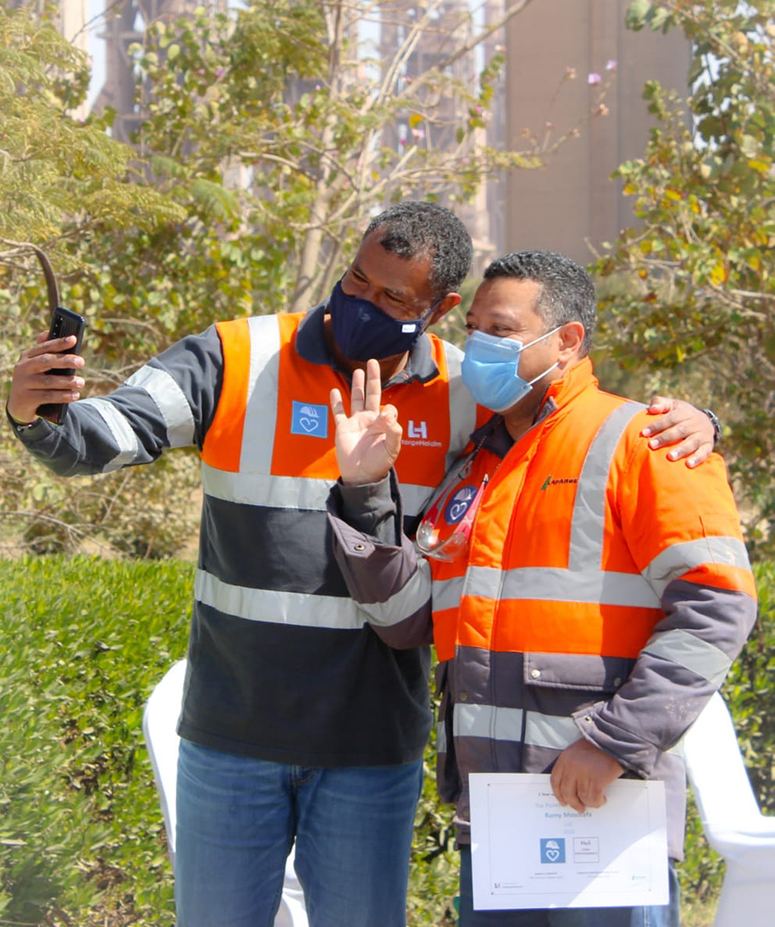
On a more optimistic note, Baumgartner says more recent Egyptian government guidance and investment in new infrastructure projects are creating new business opportunities for the national cement and construction sectors.
“Lafarge Egypt has developed an integrated plan to reduce costs and create export opportunities. We also called for the support of the Egyptian government to intervene regarding overcapacity difficulties, which resulted in the latest decision capping concrete production for one year.
“Another challenge from the COVID-19 pandemic was to keep our employees safe. We have continued to live up to our core value to maintain health and safety of our employees, acting swiftly and with great solidarity to protect employees, contractors and all our stakeholders.”
Recently, in cooperation with the Egyptian Ministry of Health, Lafarge Egypt has hosted medical teams that have vaccinated all company employees and contractors.
“We are also committed to support our community, hand in hand with civil society institutions we provided and continue to provide masks, sanitizers, sharing in repairing ventilators of public hospitals and providing food boxes to labour in the informal sector that lost their jobs. We believe in our corporate social responsibility and have very successful efforts in the field of health,” says Baumgartner.
Climate-change concerns
Climate change is a crucial issue, not only for cement manufacturers but for the whole planet. The largest driver of global warming is the emissions of gases, of which more than 90% are carbon dioxide and methane.
“Lafarge Egypt and the Holcim Group are passionately committed to building a net-zero future,” stresses Baumgartner. Lafarge Egypt is contributing to Holcim’s 2030 goals of lowering its target for carbon dioxide intensity in cement to 475kg net CO2 per ton of cementitious material and partnering with the Science-Based Targets initiative (SBTi) to become the first global building materials company to sign the SBTi-administered ‘Business Ambition for 1.5°C’ pledge to help restrict the global temperature rise to 1.5°C above pre-industrial levels.

Baumgartner says that due to its commitment to make cities greener, build smarter infrastructure and improve living standards, Lafarge Egypt has been working on many aspects to share in accelerating the transition to net zero by developing green building solutions like ECOPlanet and ECOPlanet Prime. The company’s El Momtaz-branded Pozzolanic cement produces 10% less carbon emissions than standard cement recipes.
He adds: “Lafarge Egypt is driving the circular economy across everything it does to keep materials in use for as long as possible, giving them a second, third and fourth life and using only what is needed to preserve nature.
“Digitalisation is a major tool that we use to increase our sustainability efforts. We staged a virtual training programme for journalists from various media outlets, raising awareness of sustainable materials production practices and systems. For that programme, Lafarge Egypt joined forces with prominent professionals in the sustainable development field including the Engineering at Consultations Group (ECG), Plastic Bank, and the European Bank for Reconstruction and Development (EBRD).”
Clearly, for Baumgartner, Lafarge Egypt’s future success must come with a bright green tinge.


